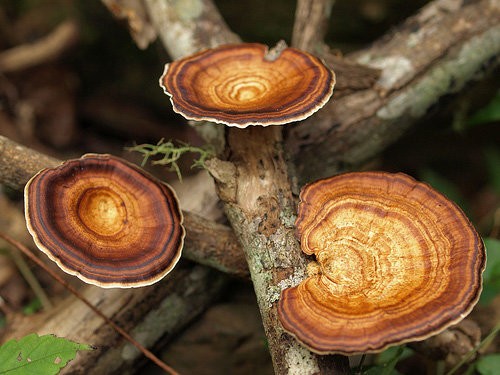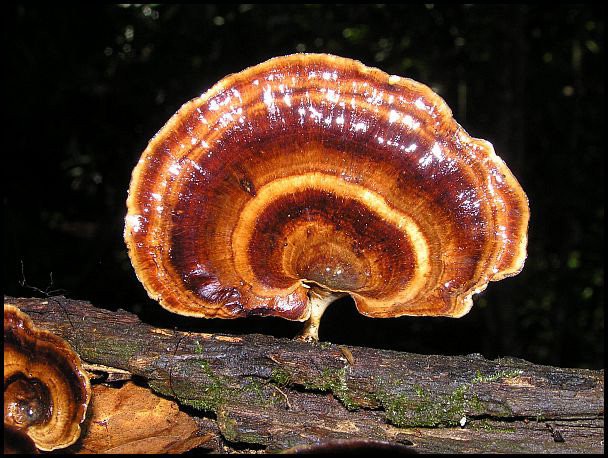Contents
Yellow leg microporus (Microporus xanthopus)
- Polyporus xanthopus

Microporus yellow-legged (Microporus xanthopus) belongs to the family of polypores, the genus Microporus.
External Description
The shape of the yellow-legged microporus resembles an umbrella. A sprawling cap and a thin stem make up the fruiting body. Zoned on the inner surface and at the same time its fertile, the outer part is completely covered with small pores.
The fruiting body of the yellow-legged microporus goes through several stages of development. At first, this fungus looks like an ordinary white spot that appears on the surface of the wood. Subsequently, the dimensions of the hemispherical fruiting body increase to 1 mm, the stem actively develops and lengthens.
The leg of this type of mushroom often has a yellowish color, which is why the specimens got this name. An extension of the funnel-shaped cap (jellyfish umbrella) comes from the top of the stem.
In mature fruiting bodies, the caps are thin, characterized by a thickness of 1-3 mm and concentric zoning in the form of different shades of brown. The edges are often pale, more often even, but sometimes they can be wavy. The width of the cap of the yellow-legged microporus can reach 150 mm, and therefore rain or melt water is well retained inside it.
Grebe season and habitat
Yellowleg microporus is found in the tropical forests of Queensland, on the territory of mainland Australia. It develops well on rotting wood, in the Asian, African and Australian tropics.

Edibility
Yellow-legged microporus is considered inedible, but in the homeland the fruiting bodies are dried and used to create beautiful ornaments. There are also reports of the species being used in Malaysian indigenous communities to wean babies from breastfeeding.









